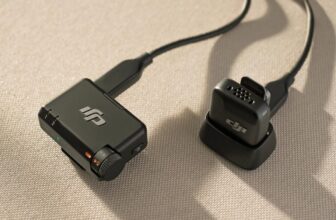The moai statues of Easter Island have long presented an enigma for researchers wondering how the ancient Rapa Nui people managed to move these enormous monoliths around the island. And now, a team of anthropologists believes they may finally have the answer—by way of some rather bizarre physics experiments.
In a recent Journal of Archaeological Science paper, anthropologists Carl Lipo and Terry Hunt analyzed 962 moai statues, creating detailed, high-resolution 3D models to investigate their design and how they might have been transported.
From there, they devised an experiment to test whether a a moai could “walk” from a quarry to its ceremonial platform, a theory they actually tested in the field.
They found that, by using ropes, teams of people could coax the statues to waddle in a zig-zag motion: They found that just 18 people could “walk” a 4.35-ton replica moai for about 330 feet (100 meters) in just 40 minutes. The demonstration, they argued, refutes previous theories that the Rapa Nui used wooden transport devices to move their statues, or, even wilder, that they are the relics of alien civilizations.
“People have spun all kinds of tales about stuff that’s plausible or possible in some way,” Carl Lipo, study lead author and an anthropologist at Binghamton University, said in a statement. “But they never go about evaluating the evidence to show that, in fact, you can learn about the past and explain the record that you see in ways that are fully scientific.”
The genius in the details
When creating 3D models of the moai, the researchers identified several design features that may have made the statues conducive to transportation. Specifically, they noted that the statues tended to have a wide D-shaped base and a forward lean (perhaps a product of their large, charming noses). They decided that using an “upright, rocking” motion would be the easiest way to get the statues “walking,” according to the paper.

The roads of Rapa Nui also support this hypothesis, the researchers added. These roads, about 15 feet (4.5 meters) wide with concave cross-sections, appear “purposefully engineered rather than incidental,” meaning they were likely built specifically to help keep the moai stable during their “walks,” the anthropologists explained.
But the archeological evidence also suggests that the moai themselves may have terraformed the roads, creating more bumps and dents in the road for subsequent moai statues to follow. “This engineering feature transforms what might otherwise be unpredictable movement across rough terrain into a controlled, directed progression along a prepared pathway,” the paper noted.

“The physics makes sense,” said Lipo. “What we saw experimentally actually works… Every time they’re moving a statue, it looks like they’re making a road. The road is part of moving the statue. We actually see them overlapping each other and many parallel versions of them.”
Case closed?
The debate over the “correct” explanation for moai transportation is a surprisingly heated one, and a section of the paper is entirely dedicated to rejecting alternative explanations.
However, the researchers argue that their “walking moai hypothesis” also aligns with Rapa Nui oral traditions and songs that have described the moai as “walking” from the quarry. If the new theory is correct, it may be reflective of the songs of these ancient engineers.
“It shows that the Rapa Nui people were incredibly smart. They figured this out,” said Lipo. “They’re doing it the way that’s consistent with the resources they have. So it really gives honor to those people, saying, look at what they were able to achieve, and we have a lot to learn from them in these principles.”
Trending Products

CHONCHOW 87 Keys TKL Gaming Keyboar...

Lenovo Ideapad Laptop Touchscreen 1...

Logitech MK235 Wi-fi Keyboard and M...

Amazon Fundamentals – 27 Inch...

ASUS RT-AX1800S Dual Band WiFi 6 Ex...

Acer CB272 Ebmiprx 27″ FHD 19...

Wireless Keyboard and Mouse Combo, ...

ASUS 24 Inch Desktop Monitor –...

SAMSUNG 32″ Odyssey G55C Seri...





